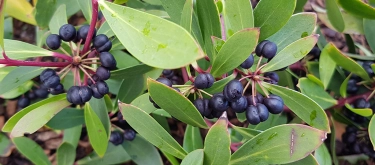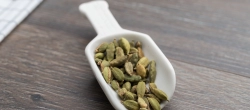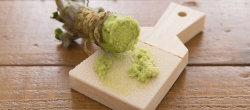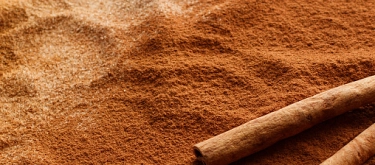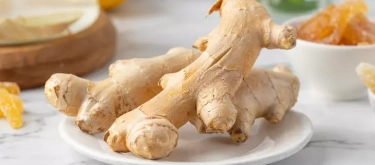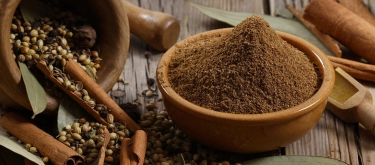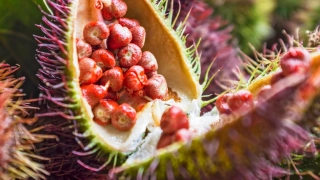Pink Pepper: Taste Profile, Aroma, Benefits and Health Risks
Pink pepper, often recognized for its delicate, rosy hue and subtle, sweet flavor, is a unique spice that adds both visual appeal and a gentle warmth to dishes. Although not a true pepper (it comes from the Schinus genus), it is widely used as a culinary accent in both sweet and savory recipes. This article offers a comprehensive sensory description of pink pepper—including its taste, aroma, texture, and appearance—followed by an in-depth flavor analysis, culinary applications, selection and storage guidelines, nutritional insights, and key dietary considerations.
Pink pepper is naturally vegan, gluten-free, and free of common allergens. While it offers a mild and slightly sweet flavor, it should be used in moderation by those with sensitive stomachs due to its aromatic compounds.
What does Pink Pepper taste like?
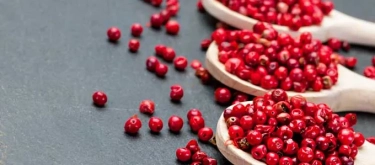
Complete Sensory Description
Taste:
Pink pepper delivers a mild, fruity heat with a subtle sweetness that distinguishes it from its black counterpart. Its gentle spiciness is balanced by a light, citrus-like tang, making it an excellent complement to a variety of dishes.
Aroma:
The aroma of pink pepper is delicate and floral, imbued with hints of rose and tropical fruits. Its fragrance is less pungent than black pepper, offering a more nuanced, inviting scent that enhances both sweet and savory recipes.
Texture:
In its whole form, pink pepper consists of small, brittle berries that can be slightly crunchy when chewed. When ground, it transforms into a fine powder that disperses easily, releasing its mild flavor evenly throughout a dish.
Appearance:
True to its name, pink pepper is notable for its vibrant, rosy-pink color. Whether used whole or freshly ground, its striking hue adds a pop of color and visual interest to culinary creations.
In-Depth Flavor Analysis
-
Mild Fruity Heat:
The foremost characteristic of pink pepper is its gentle heat, which is far milder than that of black or white pepper, making it ideal for delicate dishes. -
Subtle Sweetness:
A natural sweetness underlies the spice, balancing its spiciness and offering a complex flavor that can enhance both savory and sweet recipes. -
Citrus and Floral Notes:
Delicate hints of citrus and floral aromas contribute to its multifaceted taste, adding layers of depth without overwhelming the palate. -
Balanced Complexity:
The overall flavor profile of pink pepper is well-rounded—mild heat, a touch of sweetness, and bright, aromatic nuances combine to create a spice that elevates rather than dominates a dish.
Culinary Applications
-
Seasoning for Salads and Dressings:
Sprinkle whole or ground pink pepper over salads to add a subtle kick and a burst of color, or incorporate it into vinaigrettes for an extra layer of complexity. -
Garnish for Meat and Seafood:
Use pink pepper as a finishing spice on grilled meats, fish, or shellfish to enhance flavor without overpowering the natural taste of the protein. -
In Sauces and Marinades:
Incorporate pink pepper into sauces and marinades, where its mild heat and sweet, citrusy notes can meld harmoniously with herbs and other spices. -
Baking and Desserts:
Experiment with adding a pinch of ground pink pepper to baked goods, fruit compotes, or chocolate desserts for a surprising twist that accentuates sweetness with a gentle spice. -
Infusions and Beverages:
Use pink pepper in teas, cocktails, or homemade syrups to impart a unique, aromatic quality that complements both hot and cold drinks.
Selection and Storage
Selecting Pink Pepper:
- Choose berries that are uniformly pink with a vibrant, fresh appearance.
- Avoid berries that show signs of discoloration or brittleness beyond their natural texture, as these may indicate age or improper storage.
Storage Recommendations:
- Store whole or ground pink pepper in an airtight container away from direct sunlight and moisture.
- Keep in a cool, dark pantry or spice drawer to preserve its delicate flavor and color.
- For best results, use within six months to maintain peak freshness.

Quick Facts
- Mild and Versatile:
Pink pepper provides a gentle heat with a sweet, floral flavor, making it suitable for a wide range of dishes. - Visual Appeal:
Its bright pink hue adds an attractive color accent to culinary presentations. - Antioxidant Content:
Like many spices, pink pepper contains antioxidants that contribute to its health benefits. - Naturally Vegan and Gluten-Free:
A safe, natural seasoning for various dietary needs. - Culinary Complement:
Enhances both savory and sweet recipes without overwhelming them.
Health Benefits of Pink Pepper
- Digestive Aid:
Its mild spice can stimulate digestion and enhance nutrient absorption. - Antioxidant Support:
The natural antioxidants in pink pepper help protect cells from oxidative stress. - Anti-Inflammatory Properties:
Some studies suggest that pink pepper’s bioactive compounds may reduce inflammation. - Metabolic Boost:
Its aromatic compounds may aid in boosting metabolism, supporting overall energy levels. - Mood Enhancer:
The gentle, floral aroma can have a calming effect, contributing to an overall sense of well-being.
Additional Nutritional Insights
- Core Composition:
Pink pepper is rich in essential oils and phytochemicals that deliver its unique flavor and potential health benefits. - Caloric Efficiency:
It is very low in calories, making it a diet-friendly way to add flavor without extra energy. - Micronutrient Content:
Contains trace amounts of minerals like potassium and manganese, contributing to its overall nutritional profile. - Minimal Processing:
When used whole or freshly ground, pink pepper retains its natural properties with minimal loss of nutrients. - Synergistic Effects:
Can be combined with other spices to enhance flavor complexity and nutrient absorption.
How to Enjoy Pink Pepper
- As a Finishing Spice:
Sprinkle freshly ground pink pepper over dishes just before serving to enjoy its full flavor and aromatic benefits. - In Spice Blends:
Incorporate it into custom spice blends or rubs to add a gentle heat and unique flavor twist. - In Infused Oils:
Create a flavored oil by infusing pink pepper with olive oil, perfect for drizzling over salads or roasted vegetables. - In Baking:
Add a pinch to doughs, batters, or fruit fillings to introduce a subtle spicy-sweet note. - In Beverages:
Enhance cocktails or herbal teas with a hint of pink pepper for an unexpected aromatic lift.
Harm and Dietary Considerations
- Sensitive Stomachs:
Due to its natural acidity and aromatic compounds, pink pepper should be used in moderation by individuals with sensitive stomachs or acid reflux. - Moderation is Key:
Its potent flavor means that a little goes a long way; overuse can overwhelm a dish. - Allergen Awareness:
While generally safe, always consider individual sensitivities to any spice. - Storage Matters:
Improper storage can lead to a loss of flavor and potency, so keep it in an airtight container away from light and moisture.
Conclusion
Pink pepper is a delightful spice that offers a gentle heat combined with sweet and floral nuances. Its vibrant color and unique flavor profile make it an attractive addition to a variety of dishes, from savory salads and meats to innovative desserts and beverages. With its natural, minimal processing and versatile culinary applications, pink pepper is a valuable asset in both home kitchens and gourmet establishments. Enjoy its benefits responsibly to enhance your meals while reaping its potential health rewards.
References
- McGee, H. (2004). On Food and Cooking: The Science and Lore of the Kitchen. New York: Scribner.
- Prakash, D., et al. (2012). "Antioxidant and Antimicrobial Activities of Black Pepper (Piper nigrum L.) Extracts." Journal of Food Science and Technology, 49(6), 666–673.
- Various culinary sources and traditional recipes.

